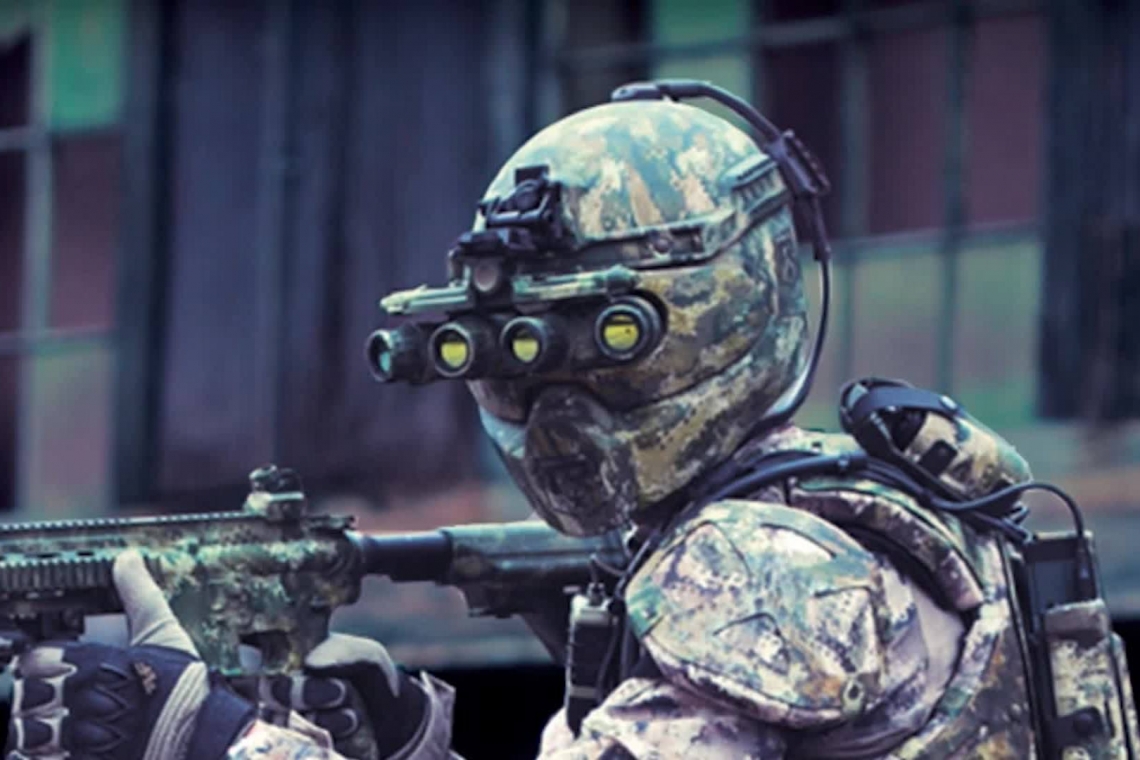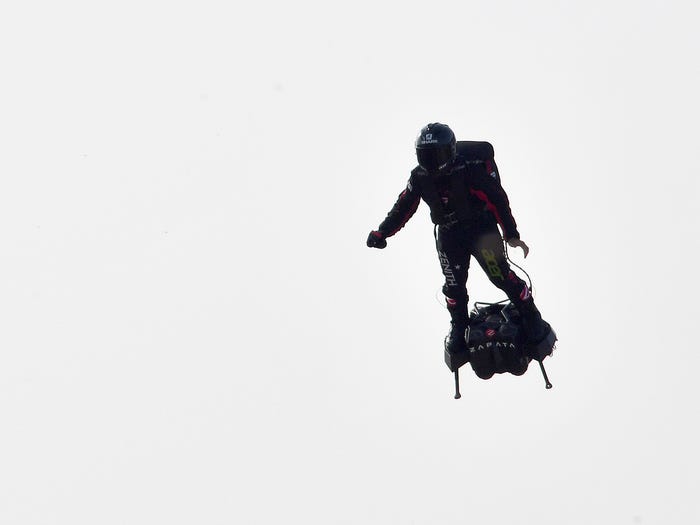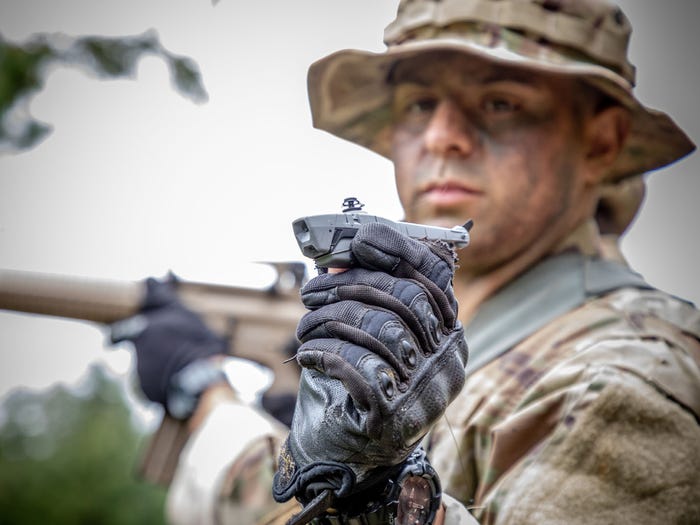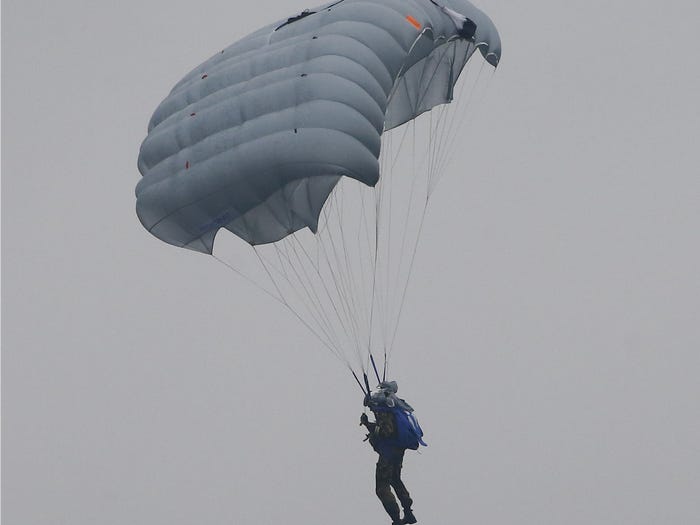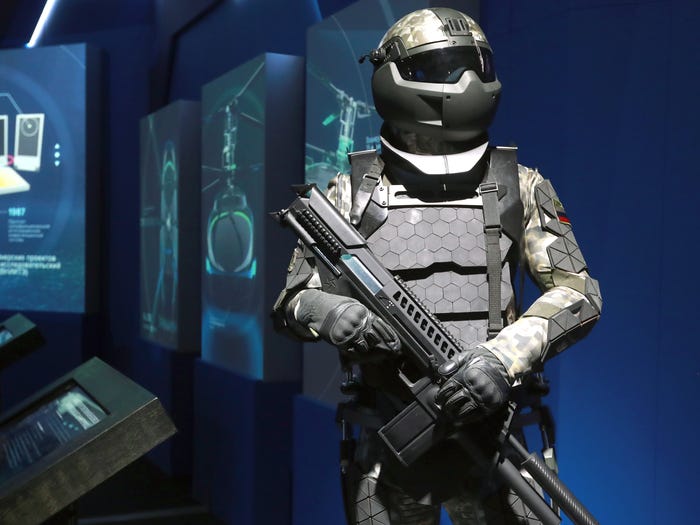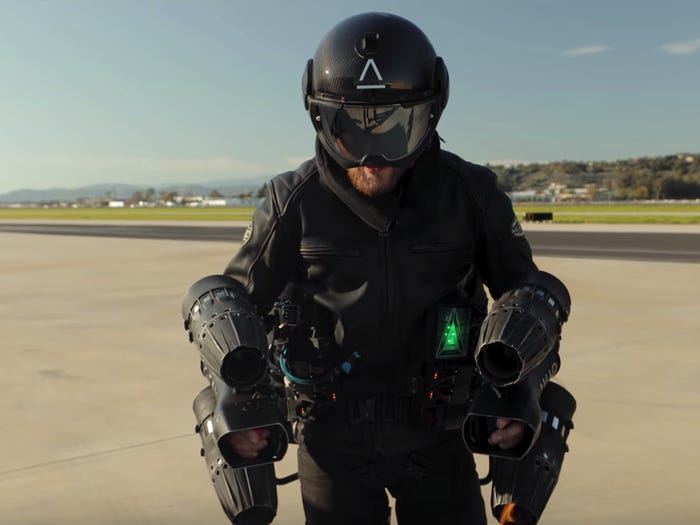Militaries and private companies around the world are developing new technologies that turn war fighters into supersoldiers. Jet-powered suits that allow the wearer to hop between boats moving at 20 knots and flying hoverboards are just the start of it.
The Russian military is developing motorized body armor that looks like it belongs on Boba Fett from "Star Wars." And the hoverboard isn't just something from "Back to the Future," it's a real invention that France's Franky Zapata successfully used to cross the English Channel this week.
The Russian military, as well as the US, France, and Great Britain, are all developing futuristic technologies that seem like something straight out of a Marvel blockbuster. But these technologies aren't far off in the future; many are already in testing phases — or in use on the battlefield.
Read on to see some of the most wild futuristic military tech out there.
The new goggles have dramatically improved marksmanship, Lt. Gen. James Richardson, deputy commander of Army Futures Command, recently told Congress.
The goggles can display the weapon's aim point and can be linked to see video or virtual feeds from other positions, allowing troops to accurately shoot around corners without exposing their heads.
An armored brigade combat team deploying to South Korea will be the first to use the new goggles, according to Army Times.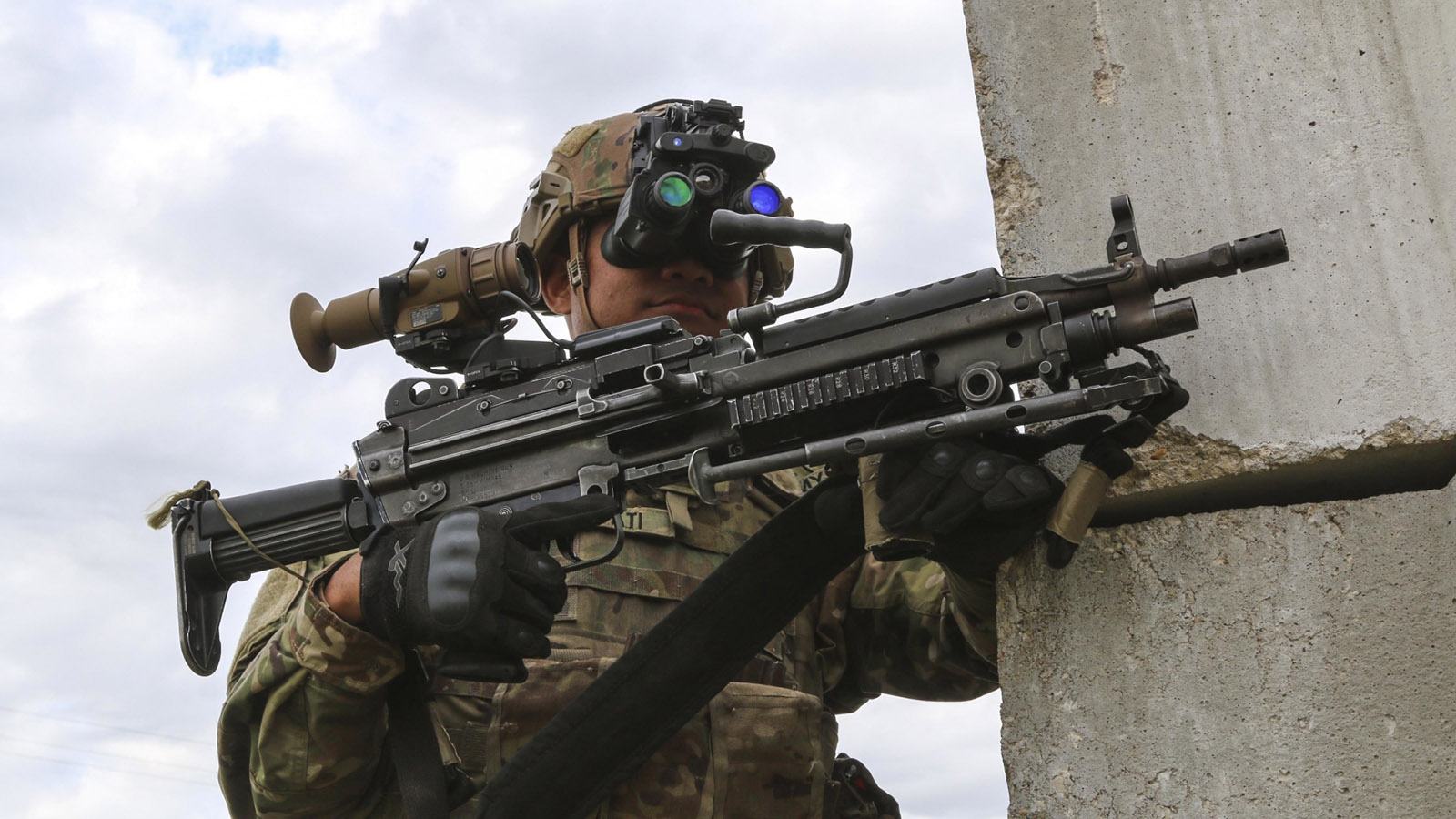
3- The FLIR Black Hornet III is a pocket-sized drone that will perform intelligence, surveillance, and reconnaissance missions in combat. The 3rd Brigade Combat Team, 82nd Airborne Division, already has the drones, which come in a pair — one for daytime and one enabling night vision. The drones are about 6 inches long and can fit on a soldier's utility belt. The Army hopes to equip every soldier with the drones in the future.
4- According to Russian state media, the Russian military is developing the D-14 Shelest parachute system, which will allow soldiers to access their weapons and begin firing immediately after they jump out of a plane.
5- Russia's infantry could soon be wearing the Ratnik-3 exoskeleton armor that reportedly allows soldiers to fire a machine gun with one hand. It has integrated electric motors — an improvement over the Ratnik-2 version, which was not motorized. It's in testing.
The US had a similar suit in development, the Tactical Assault Light Operator Suit, or TALOS. However, we're not likely to see the TALOS in combat anytime soon, Task & Purpose reported earlier this year.
7- The Army is developing a 50 kilowatt laser cannon, the Multi-Mission High Energy Laser (MMHEL), to be mounted on Stryker combat vehicles. It's designed to shoot drones and explosives out of the sky, and the Army plans to roll it out in the next four years.
The Army accelerated the development and deployment of the MMHEL. "The time is now to get directed energy weapons to the battlefield," Lt. Gen. L. Neil Thurgood, the director of hypersonics, directed energy, space, and rapid acquisition, said in a statement.
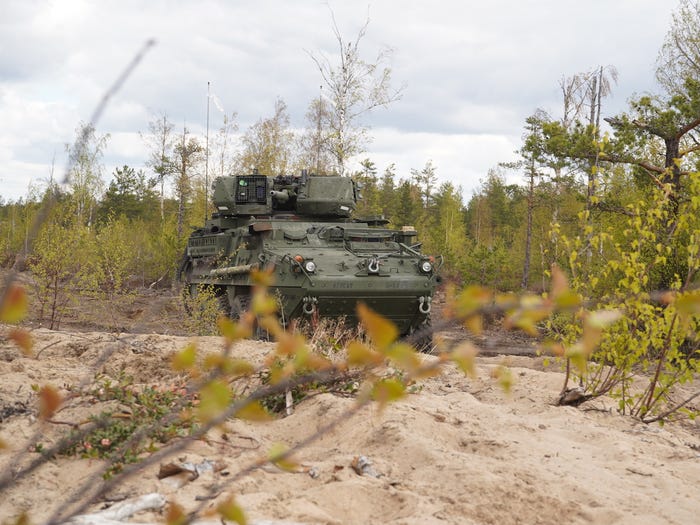
8-The Army is testing goggles that employ facial recognition, as well as technology that translates written words like road signs. The goggles may even be able to project visual data from drones right in front of soldiers' eyes. The Integrated Visual Augmentation System (IVAS) is a modified Microsoft HoloLens technology and is expected to go into wide use in the mid-2020s.
"We're going to demonstrate very, very soon, the ability, on body — if there are persons of interest that you want to look for and you're walking around, it will identify those very quickly," Col. Chris Schneider, a project manager for IVAS, said at a demonstration of the technology recently.


